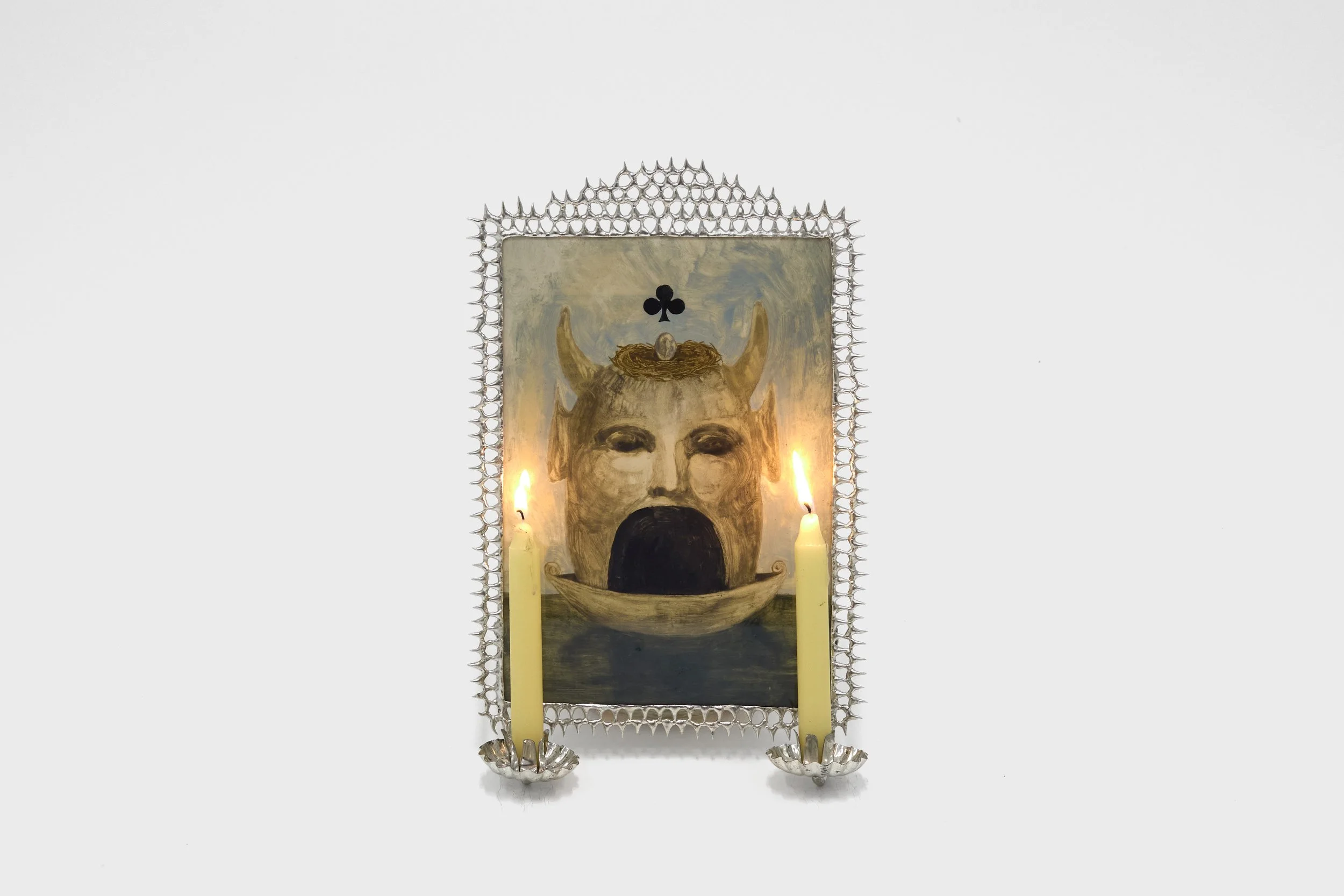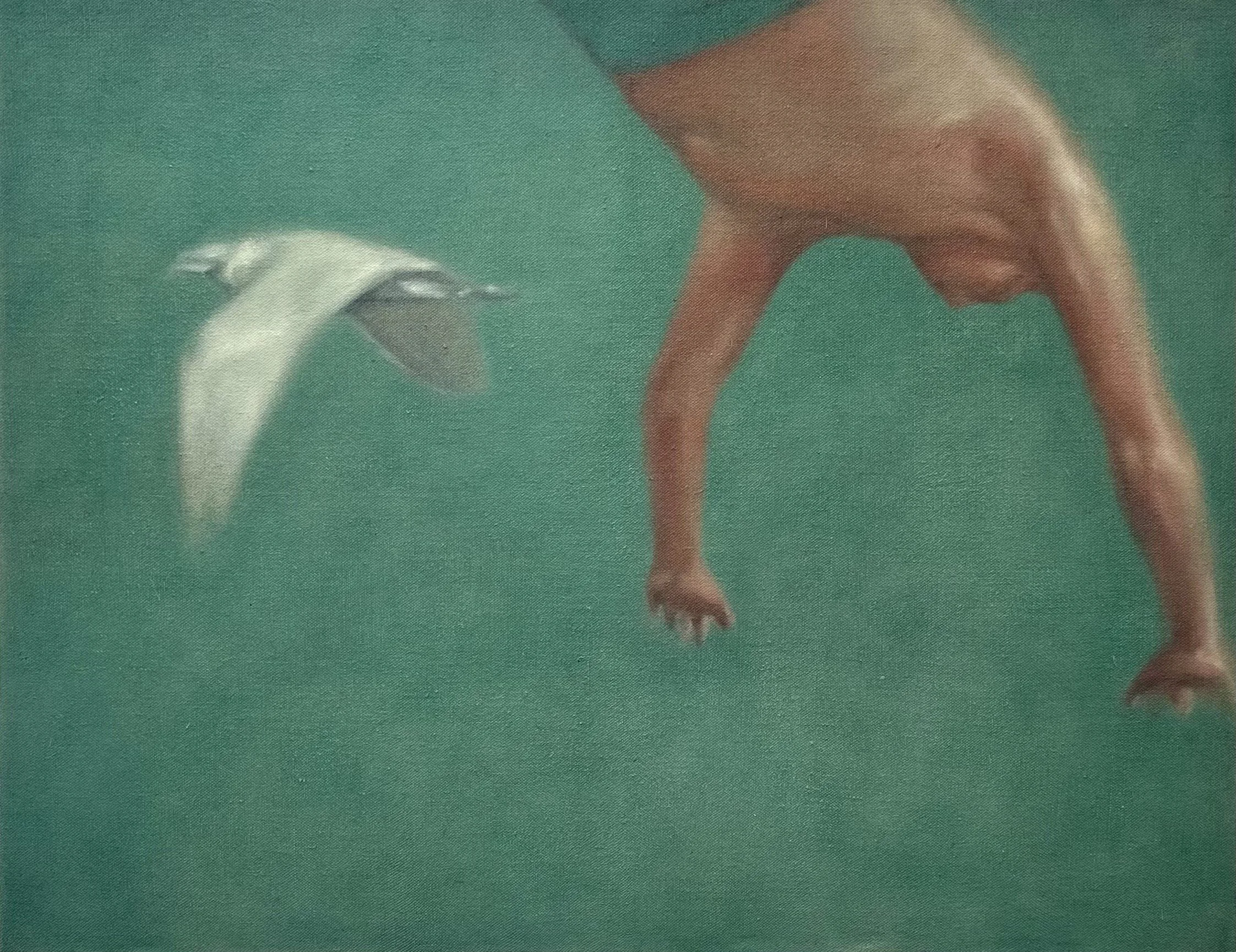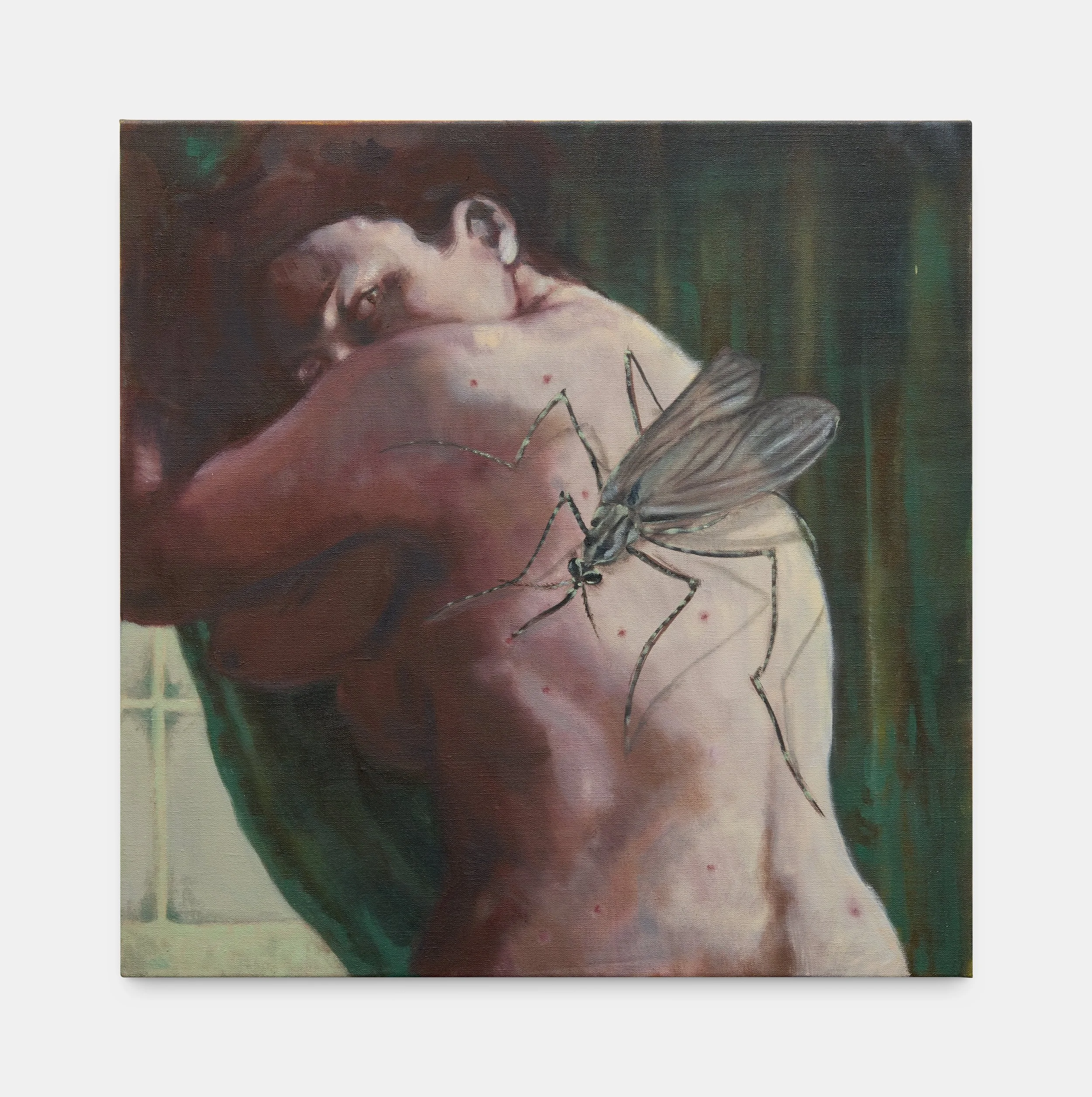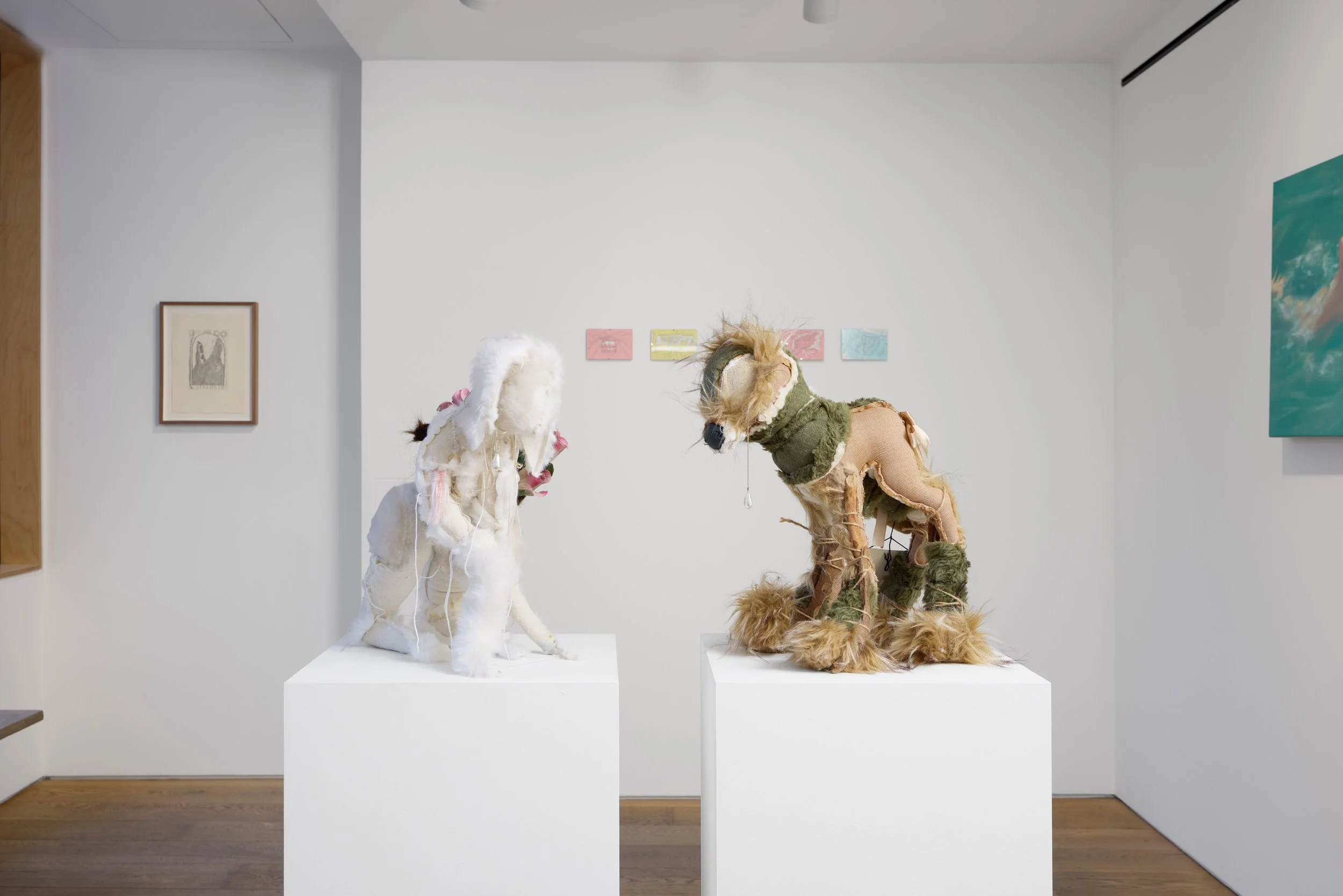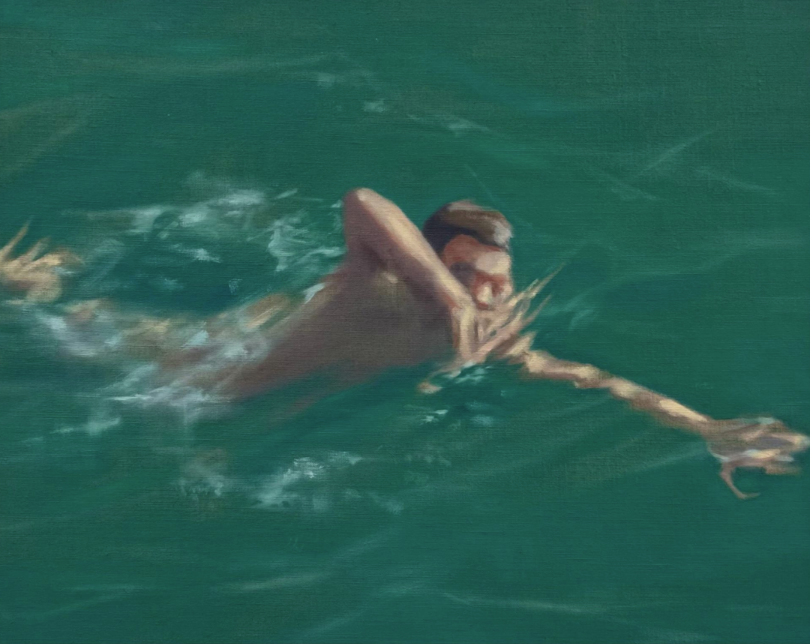A boy falling out of the sky
Elizabeth Dimitroff, Lorena Levi, Laura Benson, Dean Hoy, Chris Oh, and Abigail McGinley
7th November - 20th December
Inspired by Auden’s poem ‘Musee des Beaux Arts’, which muses on Pieter Breugel’s painting, 'Landscape with the Fall of Icarus', this exhibition features the work of Elizabeth Dimitroff, Lorena Levi, Laura Benson, Dean Hoy, Chris Oh, and Abigail McGinley.
Where the tragedy of Icarus is casually mentioned as ‘a boy falling out of the sky’, both Breugel and Auden are far more interested in the notion of suffering as an insignificant part of life, taking place in the quotidien of the surrounding world where a ship ‘had somewhere to get to and sailed calmly on’, and ‘ the sun shone / as it had to’.
The show gives pause to a comforting nihilism in which personal tragedies will slip by unnoticed by the passers-by of our lives, sometimes transforming into treasure, sometimes not, but regardless either way, the absolute truth rings true; the world continues to move steadily on.
The artists’ lyrical works play out this same story on the walls of the gallery, from childhood memories and past snapshots in Elizabeth Dimitroff’s painting which offer a similar attitude towards the slippery and evolving understanding of time in Laura Benson’s work, to the symbol-steeped work of Abigail McGinley, Chris Oh, and Lorena Levi, and the subtle antithesis in Dean Hoy’s work where that which has been cast aside, or ‘fallen’, has been picked back up again and made new.
Within the context of the current cultural zeitgeist in which we are riddled with a main character or ‘spotlight syndrome’ to an illusory captive audience, unnoticed personal tragedies play out across the figurative works of Lorena Levi whose research based practice looks into both real and imagined scenarios. For this series, the blistered feet in heels, snapped pearls, and a chewing gum bubble about the burst as parents argue tell a story of the deeply personal tragedy of the loss of an identity. Levi focuses on the small changes to the physical body that chip away silently to make us feel changed, a sticky mess of our past and future selves.
Moving deeper into the concept present in both Elizabeth Dimitroff and Laura Benson’s work regarding past narratives and the porous nature of time. In Dimitroff’s work paint is blurred via years of nostalgia as we glimpse into a moment so weighted with present emotion, temporality becomes distorted. A swimmer suspended in motion, elbow bent with a hand ready to cup the water back, and across all her work the figures have their eyes closed, bringing in privacy and the understanding of a more collective experience. Meanwhile, in the personal mythology that Laura Benson creates in her talismanic work, pendants hang showcasing found objects and spiked frames holding candles, create a reference to the Celtic concept of ‘thin places’ as she bridges the permeable gap.
Similar to the symbolic totems in Benson’s work, Abigail McGinley zooms in on the everyday objects and symbols that lead up to personal and overlooked collective tragedy. The bound lobster across a woman’s torso drives a narrative surrounding the cycle of life, death and questions around control within a woman’s body, taking us back to the body as the figure becomes a symbol of sensation.
Meanwhile, the symbols of the playing cards that make up Chris Oh’s work spin the hamartia of Icarus as one of pure luck. Oh’s reproduction of Breugel’s masterpiece reinforces the reading that the tragedy is momentary and not to be taken too seriously in life’s game.
Whilst the discussed artists all sing from the same hymn sheet, Dean Hoy’s work chimes with a different chord. In line with his practice, where he picks up bears and found objects that have been discarded, Dean seeks to look closely at transitory spaces, being left behind, and making new. His decaying bears are being taken on a journey , with forget me-nots dangling on a car sun visor which has the artists’ grandmother’s scategories list taped in ‘Blinding Starlight on a Wet Road, On the Way to a Funeral’, to the artificial flowers which were blown off graves, tragedy is made into treasure, and a singular thread of hope, that actually someone has remembered and refuses to let this feeling be left behind too.
Written by Charlotte Leseberg Smith




